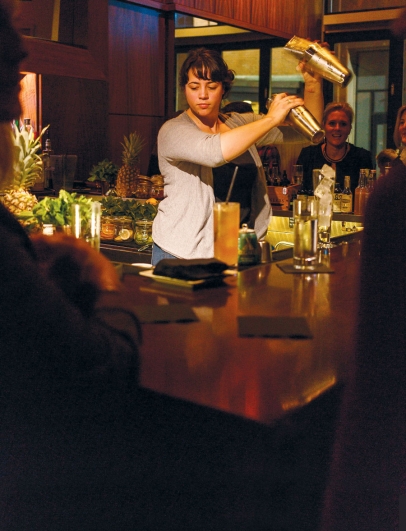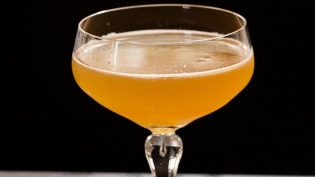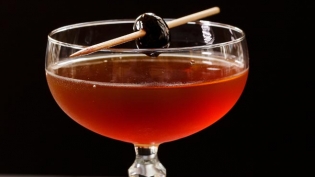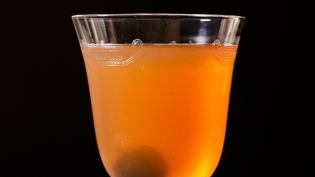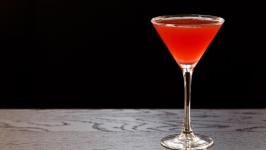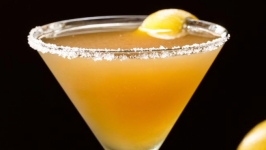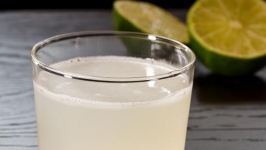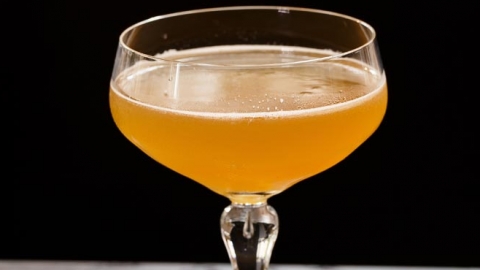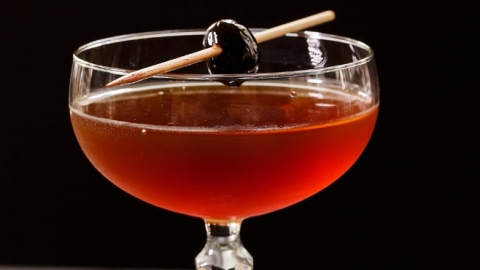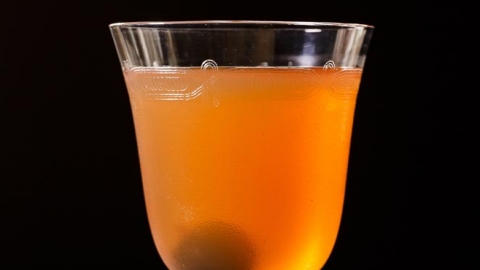Joy to the Bartender
The Craft of the American Cocktail
Since the early days of cocktail culture, bartenders have been inventing, experimenting and sharing the recipes that have become the framework of modern mixology: the classics that bartenders are still making today. Classic cocktails capture the moment—indeed, our cultural climate, our terroir and a sense of place.
The recent cocktail renaissance has elevated the cocktail scene around the country, yielding craft cocktail programs utilizing locally sourced ingredients, fresh-pressed juices and small-batch spirits. During the resurgence of mixology and classic cocktails, bar programs have become natural extensions of the farm-to-table ethos.
Where does our small state stand in the canon of the American cocktail? Where do bartenders find inspiration behind the bar and moreover, what are their secrets to liquid success?
First off, what is a classic cocktail?
A classic cocktail is a Prohibition-era or pre-Prohibition-era cocktail, crafted and documented between the 1850s and the 1930s. Six quintessential classic cocktails include the Martini, the Manhattan, the Old-Fashioned, the Daiquiri, the Sidecar and the lesser-known Jack Rose cocktail made with apple brandy, grenadine and fresh lemon. There are many more classic cocktails, but these six will provide a basic solid vocabulary for years, even decades, of stimulation. Classic and modern classic cocktails can further be divided into two categories: sours and aromatic cocktails. Simply put, sours contain fresh citrus juice and need to be shaken, and aromatics contain vermouth, fortified wine or bitters and are meant to be stirred to not muddy or over-dilute those precious spirits.
How do mixologists stay up to date?
Beverage Director David Crowell at the Stoneacre Pantry in Newport, reveals that, “In order to stay up to date, I go backwards to my favorite book, Old Mr. Boston Official Bartender’s Guide, first printed in 1935. Working with classic cocktail recipes offers the challenge of following a recipe and serving a drink the way it was intended to be served. Whereas, modern cocktails offer the challenge of using classic techniques and styles to craft a balanced and enjoyable drink.” David riffs on a classic Bourbon Old-Fashioned cocktail by muddling vanilla bean with house-made orange bitters with notes of black pepper, cardamom and coriander. He adds, “Like my first love of food and cooking, being behind the bar offers many of the same gratifying rewards.”
What’s the best style of cocktail to make at home?
According to Jen Davis, bar manager at The Eddy in Providence, “I love classic ‘equal parts’ recipes like The Last Word (gin, green Chartreuse, maraschino liqueur, lime juice) and the Corpse Reviver #2 (gin, Lillet Blanc, orange curaçao, lemon juice and a dash of absinthe) because the recipes are so streamlined. There are so many modern classics like the Naked & Famous (mezcal, Aperol, yellow Chartreuse, lime) that are simple to make but have an added complexity of flavor.” Davis’s current favorite cocktail, The Bees on Bees on Knees, is an “equal parts” spin on a Prohibition-era cocktail, The Bees Knees, traditionally made with gin, fresh lemon and honey. The Bees on Bees on Knees showcases Malfy gin, a particularly citrusy gin from Italy, Cheongsam Smoky Mist tea liqueur (see page 44), yuzu honey and fresh-pressed lemon juice. A few drops of smoked salt water solution brighten and intensify the tannic botanicals of the tea liqueur and the exotic citrus notes of the yuzu honey.
Where do bartenders find inspiration?
Jesse Hedberg, managing partner at Tumbler’s Bar & Lounge in Providence, advises, “Travel. Traveling in Frankfort, Germany, I discovered Génépy, a semi-sweet, herbaceous cordial made with plants in the wormwood family that tastes like a woodsy, herbaceous absinthe.” Génépy turned out to be the final ingredient Jesse needed to complete The Last Worm, his smokey spin on The Last Word. He swaps gin for mezcal and Génépy des Alpes for green Chartreuse. “I had to scale back on the maraschino because the cocktail was too saccharine. Once you tweak a single ingredient in a classic, you’ve got to balance the cocktail with more or less of the other ingredients. Don’t be afraid to experiment or ruin a cocktail. Believe me, that’s part of the journey, too.”
What makes a good bartender great?
There’s an intrinsic wisdom that comes with years of bartending. A great bartender fluently pivots in and out of recipes, all the while holding conversations, ringing checks, hopefully with a bit of chutzpah, patience and speed. John “J.R.” Richard, owner and manager of the Avery in Providence, says, “Someone who cares about what they are doing is paramount. They need to be able to pay attention to everything that’s going on around them and listen to the customers. Service is the first essential ingredient to any bar.” When asked about his favorite aromatic cocktail, The Manhattan, J.R. asserts, “It’s not so much about my spin on the classic, but rather an insistence upon using good ingredients to make a Manhattan. Using quality bourbon and vermouth makes an outstanding drink. Never forget the Angostura bitters and the key is to garnish with a real Maraschino cherry.”
Which ingredients pack a punch?
Regina Merlino, bartender at Chez Pascal in Providence, says, “The home bartender can add flavor by using the many unique and delicious bitters that are available. A single drop will make a difference. And always use fresh-squeezed juices and fresh herbs whenever possible.” Regina’s exemplary Chez Manhattan is bolstered by a house-infused rosé vermouth with notes of strawberry, sage and orange zest, while Bittermens Elemakule Tiki Cocktail Bitters are reminiscent of a trip to the tropics with waves of citrus, allspice and a bit of cinnamon. Regina sips with the seasons: “My favorite spirit depends on the season. In the summer, I prefer rosé wine and light spirits like gin and vodka. In the winter, I’m inspired by rye, Cognac, red wines of the Languedoc, Southwest France and the Piedmont Region.”
What are some favorite home bartending staples?
Elizabeth Sawtelle, front-of-house manager and beverage director at Nick’s on Broadway in Providence, delights in a quality bottle of white vermouth (not dry, or sweet vermouth). “Bianco or blanco vermouth adds delicate herbal nuances to a Martini, can be sipped alone as an aperitif or mixed with sparkling water or sparkling wine yielding a low-proof sparkling cocktail. Be sure to refrigerate your vermouths and use them within a few weeks to ensure that they do not spoil.” Liz reminds us to, “stock up on fresh citrus and never underestimate the simple addition of a fresh orange or lemon zest to a cocktail to elevate the sipping experience.” Fresh cocktail garnish entices the senses and enhances the aesthetic and the olfactory experience of a cocktail too.
Jason Kindness, beverage director at the Revolving Door in Newport, recommends, “Making simple syrups from fresh fruit and herbs is the way to go—they can be paired with your favorite base spirits. As a rule of thumb, balance fresh citrus juice with an equal amount of something sweet, whether it’s your homemade syrup or a cordial.”
Where do these bartenders go for a night on the town?
Depending on the night, Tyler Schweppe, bar manager at The Dorrance in Providence, is happy to go to a dive or a craft cocktail bar. You can find him sipping cocktails at The Eddy in Providence or Pour Judgement in Newport. When Jen Davis is not behind the bar or making cocktails at home, you can find her at The Grange or The Dorrance, or either of her all-time favorite haunts: the Brown Grad Center Bar (GCB) and The Hot Club. David Crowell loves a good modern classic from The Eddy and steps out for a drink with Jason Kindness at The Revolving Door. Liz Sawtelle can be found sampling flights of tequila and mezcal at El Rancho Grande, and Jesse Hedberg enjoys a nightcap cozied up to the woodstove at Nick- A-Nees in Providence or taking in the surf at sunset at The Ocean Mist in Matunuck.
For additional cocktail recipes from Tyler Schweppe, John “J.R.” Richard, David Crowell, Elizabeth Sawtelle, Jen Davis and Jesse Hedberg, visit our Drink Section.


